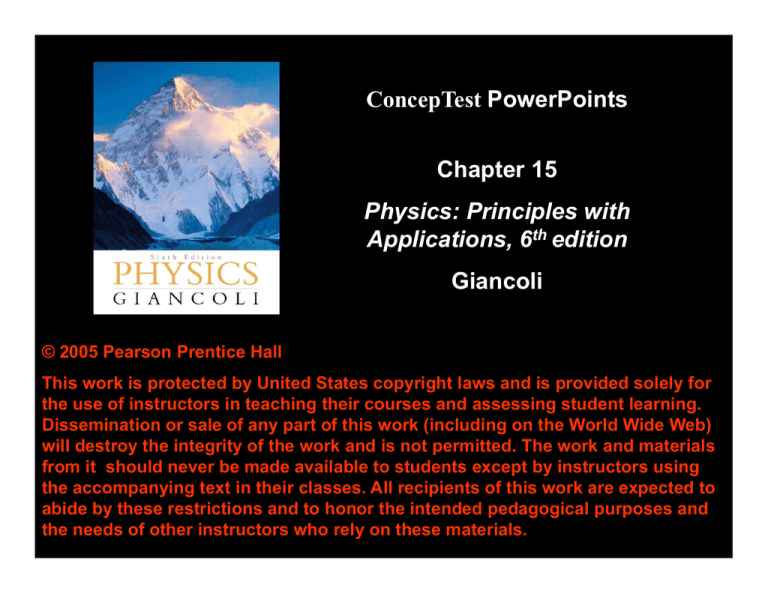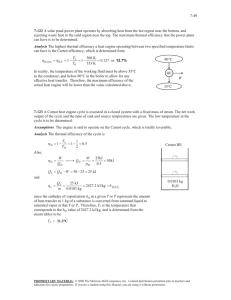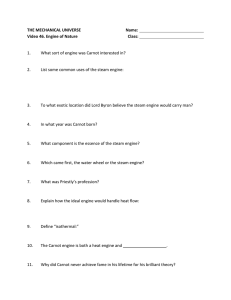
ConcepTest PowerPoints
Chapter 15
Physics: Principles with
Applications, 6th edition
Giancoli
© 2005 Pearson Prentice Hall
This work is protected by United States copyright laws and is provided solely for
the use of instructors in teaching their courses and assessing student learning.
Dissemination or sale of any part of this work (including on the World Wide Web)
will destroy the integrity of the work and is not permitted. The work and materials
from it should never be made available to students except by instructors using
the accompanying text in their classes. All recipients of this work are expected to
abide by these restrictions and to honor the intended pedagogical purposes and
the needs of other instructors who rely on these materials.
ConcepTest 15.1
A free expansion occurs when a
valve is opened allowing a gas
to expand into a bigger
container. In such an expansion
the temperature of the gas will:
Free Expansion
1) increase
2) decrease
3) stay the same
ConcepTest 15.1
A free expansion occurs when a
valve is opened allowing a gas
to expand into a bigger
container. In such an expansion
the temperature of the gas will:
Free Expansion
1) increase
2) decrease
3) stay the same
In such a process:
W = 0 there is no object to move,
Q = 0 there is no heat exchange, therefore
U = 0 by the First Law of Thermodynamics.
Thus, there is no change in the temperature.
Free expansion is an irreversible process --- the gas molecules have
virtually no chance of returning to the original state.
Free expansion is neither adiabatic nor isothermal
expansion, even though T and Q are zero.
ConcepTest 15.2
In the closed thermodynamic
Work
1) positive
cycle shown in the P-V diagram,
2) zero
the work done by the gas is:
3) negative
P
V
ConcepTest 15.2
In the closed thermodynamic
Work
1) positive
cycle shown in the P-V diagram,
2) zero
the work done by the gas is:
3) negative
The gas expands at a higher pressure
and compresses at a lower pressure.
In general, clockwise = positive work;
P
counterclockwise = negative work.
V
ConcepTest 15.3
The heat engine below is:
Heat Engine
1) a reversible (Carnot) heat engine
2) an irreversible heat engine
3) a hoax
4) none of the above
ConcepTest 15.3
The heat engine below is:
Heat Engine
1) a reversible (Carnot) heat engine
2) an irreversible heat engine
3) a hoax
4) none of the above
Carnot e = 1-TC/TH=1-270/600=0.55.
But by definition e = 1-QL/QH
=1 - 4000/8000=0.5, smaller
than Carnot e, thus irreversible.
Follow-up: What would you need to change to make it a Carnot engine?







